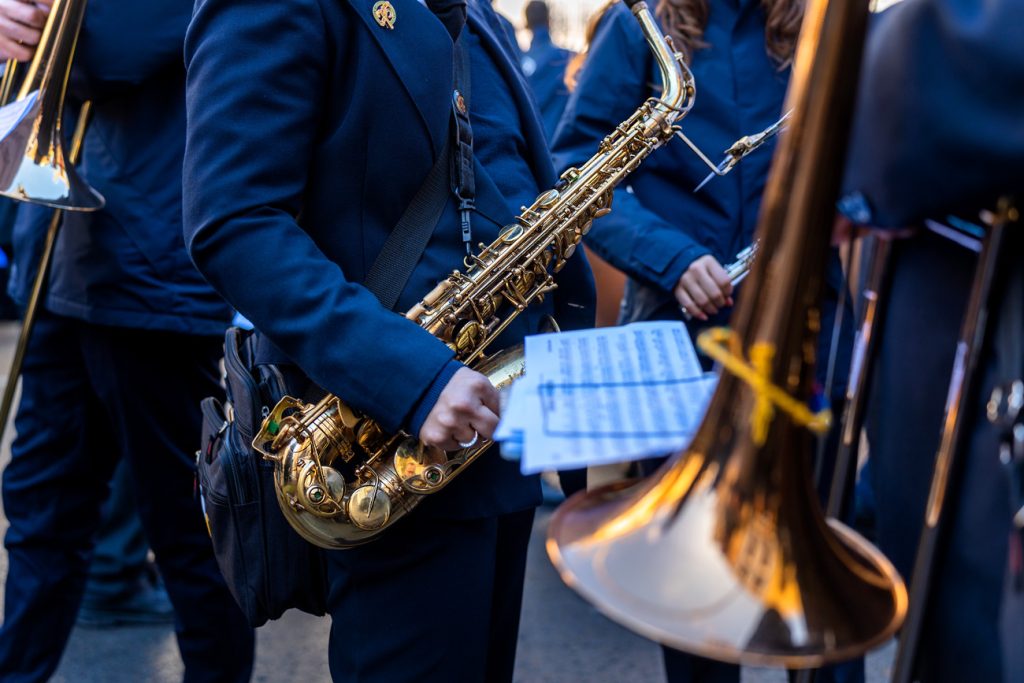Ultimate Guide: What is a Concert Band?
23rd January 2019A concert band is broadly definable as a relatively large group of brass, woodwind and percussion players who perform in a concert hall. The latter fact distinguishes a concert band from a marching band, and nor is a concert band the same as a symphony orchestra, given its lack of string sections.
Potentially maximising the confusion is the fact that a concert band can be referred to by many other terms. These range from ‘wind ensemble’, ‘wind symphony’, ‘symphonic band’ and ‘wind orchestra’ to ‘wind band’, ‘symphonic wind ensemble’, ‘symphony band’ and ‘symphonic winds’.

A concert band tends to consist of between 40 and 80 musicians, and the woodwind section is considered the main element of its ensembles.
What characterises concert band music?
The repertoire of a concert band encompasses original wind compositions, transcriptions or arrangements of orchestral compositions, light music and popular tunes.
The typical concert band instrumentation is similar to that of a marching band. However, the key difference is that a concert band is primarily intended to function as a concert ensemble. Nonetheless, concert marches are still included in a concert band’s standard repertoire.
Examples of instruments that may be used in a concert band include:
- Woodwind instruments such as clarinet, bassoon, oboe, flute and saxophone
- Percussion instruments like different types of drums and xylophones
- Brass instruments such as the trumpet, trombone, tuba, cornet and euphonium
What’s the difference between a concert band and symphonic band?
In general parlance, there is no difference between a concert and symphonic band. The terms both refer to a group of musicians playing together in Western music – or more specifically, an ensemble playing woodwind, percussion and brass instruments.
In some institutions such as schools and universities, however, the term ‘symphonic’ may refer to a more advanced band, with the normal band being called the ‘concert band’.

The concert band vs orchestra
The modern-day concert band and orchestra have certain things in common, as well as differences. The differences largely stem from the concert band being a newer creation – for example, a concert band typically plays much newer music than an orchestra.
Another major difference between the two is that an orchestra has a string section, whereas a concert band does not.
A brief history of the concert band
In 19th-century Britain and America, a concert band was often a military concert band, which would take the form of a large ensemble of wind and percussion instruments for a ceremonial or festive occasion.
The beginning of the band movement as we now know it, however, can be traced as far back as the mid-18th century, when a form of instrumental music or ‘medium for performance’ emerged in Europe.
A medium for performance typically consisting of two oboes, two clarinets, two horns and two bassoons became very popular in Europe, including among such composers as Mozart, Beethoven and Haydn.
This ‘Harmoniemusik’ would give way during the 19th century to larger instrumentation, effectively ushering in the era of the modern-day concert band.